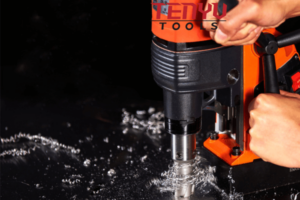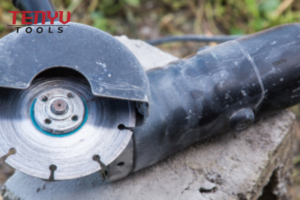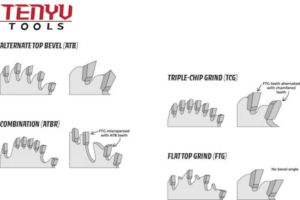Finding a good saw blade manufacturing company can feel confusing. You might see many factories offering different prices and features. You might not know which ones are trustworthy. You also want to be sure that the saw blades meet the standards you expect. You want strong blades that can cut well. You might worry about the cost and the time it takes to ship or deliver. You also want to connect with companies that understand your specific needs.
This guide looks at several ways you can locate a reliable saw blade manufacturing partner. We will talk about online platforms and how to use them. We will look at trade shows and their role in building relationships with manufacturers. We will then explore the idea of hiring sourcing agents and why they might help you save time and effort. Finally, we will discuss how to measure a company’s trustworthiness and quality. You can decide which approach fits your plan. Read on if you want to learn about these strategies in more detail.

How Can I Find the Best Online Platforms for Manufacturers?
Online platforms are a common place to start your search. You can view many manufacturers, compare their offerings, and see customer reviews. Some websites allow you to send direct messages to suppliers. Others let you post requests for proposals and wait for interested companies to contact you. You should check how each platform manages security and payment. You may need a secure channel to handle any transactions. Also, you want to see how the platform filters top-rated or verified manufacturers. That way, you can get a sense of trust and quality before you begin discussions.
Understanding Online Platforms
Online platforms have changed how people find suppliers1. They can speed up the search for high-quality saw blade manufacturing companies. These websites often have tools that let you search by region or special skill. You can also narrow your options by size, lead time, or product variety. This helps you find a partner that matches your saw blade needs.
Different platforms have different approaches. Some of them let you browse full product catalogs. Others let you read feedback from past customers. A few give you a chat function to talk directly with potential manufacturing partners. Simple communication is key. When you contact these companies, ask about their years in business, the number of staff they have, and the types of materials they work with. Also check if they follow industry standards. This might involve certifications like ISO. You can ask for proof of these certificates. Keep the conversation open, but also use clear language. Make your needs known. If you need custom saw blades, mention the shape, diameter, or any other details. If you need large or small quantities, be open about that from the start.
You can also compare fees on a table or spreadsheet. Here is a short sample of how you can list each important factor:
| Manufacturer Name | Years in Business | Minimum Order | Lead Time | Certificates |
|---|---|---|---|---|
| Company A | 10 | 100 units | 2 weeks | ISO 9001 |
| Company B | 5 | 50 units | 3 weeks | ISO 9001, ISO 14001 |
| Company C | 8 | 200 units | 4 weeks | None |
This simple table can help you decide which manufacturer fits your goals. You might also add columns for pricing, shipping choices, or payment methods. Clear data will help you compare different suppliers on the same platform. This saves you time. You won’t have to keep clicking through different pages.

How Can Trade Shows Help You Connect with Manufacturers?
Trade shows are in-person events. They let you see products up close and meet potential partners face to face. You can talk to company reps and get to know how they approach production. You might also see live demonstrations that show the cutting ability of their saw blades. This is your chance to hold the products in your hands. Then you can note how well-made they are. Some trade shows focus on certain industries. That means you can find specialized saw blade manufacturers that match your niche. This can save you from searching in broad, general directories.
Building Real Connections at Trade Shows
Trade shows are more than fancy gatherings. They bring you near to experts and technology. You get real conversations that can shape how you pick your saw blade supplier. When you visit a trade show, walk around and note which booths look interesting. Then talk to the people in charge. Ask about their company’s history and what type of machines they use. Also, ask them about their future plans. See if they plan to adopt new materials or new blade designs2.
Trade shows also let you compare different brands side by side. You can see the difference in blade edges or coatings. You can watch demonstrations of how a blade cuts through wood or metal. This direct experience is good for checking durability. You can also learn which blade stays sharp the longest. In a table like the one below, you can keep track of your observations:
| Company | Blade Type | Demonstration Notes | Key Features |
|---|---|---|---|
| X Corp | Circular | Smooth cuts on wood | Heat-treated steel |
| Y Corp | Bandsaw | Clean cuts on metal | Custom coating options |
| Z Corp | Diamond | Fast cuts on stone | Long-lasting sharpness |
You can write short notes on how well each blade performs. You can also ask questions about production capacity or special pricing. This approach helps you see both product and team quality.
Some trade shows also have educational sessions. You can attend short seminars where experts talk about new trends. These talks can teach you new ways to pick or use saw blades. You might learn about cost-saving practices or new cutting technologies. That knowledge can help you talk to manufacturers in a smarter way. You can bring up those ideas during conversations. You might find a unique partnership that saves you money and time. In the end, trade shows are good for forming personal ties. That kind of direct bond can help you gain trust in a business.

Why Should You Consider Hiring Sourcing Agents?
Sourcing agents are middle people who help you find the right manufacturers. They usually have deep contacts in the industry. They might know where to get saw blades made fast, at a fair price, and with good quality. They can handle discussions for you. They can also help you avoid language barriers or cultural gaps. This might be useful if you are working with overseas factories. Sourcing agents can check factories and see if they meet safety rules. They can also help with shipping and customs. This can save you time and reduce possible problems.
Working with Sourcing Agents for Better Results
A sourcing agent3 can be a big help, but you need to be sure you choose the right one. Start by asking about their past work. Check if they have guided clients in the saw blade sector. A good sourcing agent will have a track record of success. They can show you how they handled talks and got good prices. They might also have reports on factory checks. These checks can reveal if the factory meets your quality standards. By having someone local in that region, you can gather more accurate details.
When you think about hiring a sourcing agent, list out the services you expect. They might handle communication, factory visits, or contract drafting. You can keep track of the services, fees, and timeline in a small table like this:
| Service | Agent’s Role | Estimated Cost | Timeline |
|---|---|---|---|
| Factory Check | Visit plant, create report | \$300 per location | 1 week |
| Quality Inspection | Inspect batch of blades | \$200 per batch | 1-2 days |
| Sample Coordination | Gather product samples | \$100 per shipment | 1-2 weeks |
| Negotiation Assistance | Talk about terms and price | Fixed 5% of order | Varies by order |
Use this as a simple guide to keep track of expenses. If the agent’s rate is unclear, talk about it before signing a contract. Make sure there are no hidden fees. An agent might ask for a commission if they bring you a specific deal. Ask them to define the terms clearly.
Also, watch out for conflicts of interest. Some sourcing agents may own a stake in certain factories. This can push them to recommend one place over another. You want an agent who is open about their connections. Read reviews or talk to past clients to learn if the agent is honest. If they have many good references, they might be the right pick. You should also confirm how they handle problems. For example, if a batch of saw blades arrives with defects, do they follow up with the manufacturer for a fix? These details matter for a smooth workflow.
A sourcing agent can make your job simpler. They can save you from traveling to remote factories. They can also help you avoid mistakes with shipping paperwork. In short, they can be a strong partner. But always pick an agent who matches your style and budget.

How Can I Assess a Manufacturer’s Reliability and Quality?
You may have found a few potential suppliers, but you want to be sure they can deliver consistent quality. You also want to check that they handle business in a stable and reliable way. You do not want sudden delays or incomplete orders. You should review a company’s financial records if they are open to sharing them. You can also ask about past customers to see how satisfied they are. Another step is to look at product samples or even plan a small test order. That helps you see if the blades really meet your needs.
Checking Reliability and Product Standards
Checking reliability is about more than just reading a manufacturer’s website. You need to dig deeper. First, check their track record4. Ask how many orders they fulfill every month. Ask if they work with recognized clients. You might also want to see pictures of their factory. In some cases, you can do a factory audit. That means you or a trusted partner can visit the production line. You can see if workers follow strict guidelines for quality checks. You can also see if the factory uses modern machinery. If their machines are outdated, it might affect the final output.
Quality can come from proper raw materials. If you want blades that cut through hardwood or metal, see if the factory uses high-grade steel or carbide. Ask them how they test blade hardness. You can keep a checklist like this:
| Quality Factor | Details to Check | Questions to Ask |
|---|---|---|
| Raw Materials | Steel or carbide type | “Where do you get your materials from?” |
| Production Process | Machinery age and safety protocols | “How often do you maintain your machines?” |
| Quality Control Steps | Frequency of inspections and tests | “Do you run blade sharpness tests?” |
| Certifications | Industry standards (ISO or similar) | “Can you show official certificates?” |
| Lead Times | Normal production speed and shipping plan | “How do you handle rush orders?” |
You can fill this table when you contact or visit the factory. The main idea is to see how prepared they are for different orders. If you discover they cannot handle large requests, you might need a backup plan. Also, you should check how they respond to product defects. Do they offer replacements? Do they give refunds? If the answers to those questions are not clear, you might face trouble later.
When you get sample blades, test them in real conditions. If you cut wood, see if the blade stays sharp after several cuts. If you cut metal, watch for signs of blade wear or breakage. Keep track of the performance. You might want to run repeated tests with different materials. Note how the blade stands up to stress. If you see early wear, mention it to the manufacturer. Ask if they can improve the heat treatment or the coating.
These steps will help you narrow your choice to a reliable partner. If a company is open, shares real data, and shows a good attitude, you can feel more confident in doing business. You will know that your saw blades are made by a group that values quality and trust.

Conclusion
The search for a great saw blade manufacturing company involves many steps. You can start with online platforms. You can see reviews and compare suppliers in a straightforward way. You can also go to trade shows and talk with potential partners face to face. If you need extra help, you can hire sourcing agents. They can handle talks and factory checks. In the end, you must also assess the reliability and quality of your shortlist. Ask direct questions, look at sample products, and do a thorough inspection when needed. With these steps, you can find a saw blade manufacturing partner that meets your needs for quality, cost, and timely delivery.
-
"suppliers" is key to understanding how businesses can access resources. ↩
-
Blade designs are a significant consideration in the trade show context. ↩
-
A sourcing agent is essential for businesses involved in global trade, helping them find suppliers and manage procurement processes efficiently. ↩
-
Track record is crucial in assessing reliability, as it reflects the company’s history of meeting deadlines. ↩





